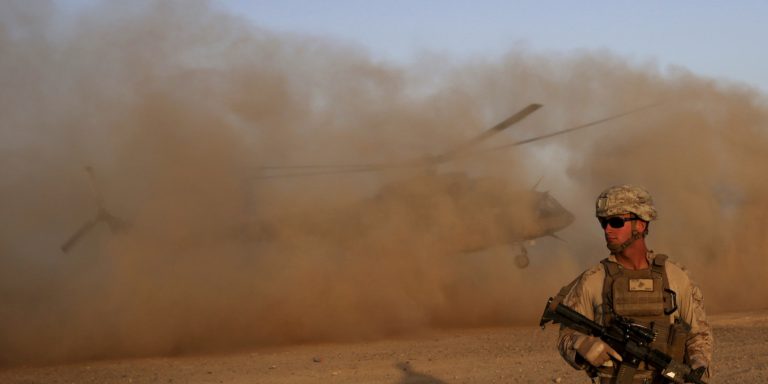INTELBRIEF
January 24, 2018
IntelBrief: The U.S. Digs Deeper in Afghanistan

- On January 23, the U.S. State Department reported that an unspecified number of Americans were killed or injured in a recent attack on a hotel in Kabul.
- The U.S. is in the process of once again increasing its military operations in this 16-year plus war, with no end in sight.
- Efforts will be renewed to destroy Taliban narcotics facilities in order to squeeze the group financially.
- Despite more than $8 billion spent on counter-narcotics over the last decade, the 2017 opium crop was the largest ever, defying the best plans of the U.S. and coalition partners.
The January 20, 2018, attack on the Intercontinental Hotel in Kabul highlights how precarious the security situation in Afghanistan remains. In what should be the most secure part of the country, the capital, the hotel attack by the Taliban was especially heinous, as gunmen went from room to room trying to kill as many people as they could. The siege lasted 13 hours, and early reports claimed 22 people were killed with another person wounded. On January 23, the U.S. State Department expressed ‘deepest condolences’ to the families of those Americans killed, though it did not provide any additional information on the causalities, including an official total.
Also on January 23, Maj. Gen. James Hecker of U.S. Central Command announced the redeployment of military aircraft to Kandahar Air Field as part of the military shift back to Afghanistan from Iraq and Syria; a cycle of escalation and repositioning between the countries that the U.S. has instituted several times since 2003. The increased air power includes the A-10, the U.S.’ most effective close-air support platform, as well as MQ-9 Reaper drones, aimed to increase overwatch and surveillance capabilities.
In his announcement of the redeployed aircraft, Maj. Gen. Hecker stated that ‘the Taliban still has not felt the full brunt of American and Afghan air power.’ This coincides with a significant increase in U.S. airstrikes that far exceed the number utilized during the years 2009-2014, the peak of U.S. troop deployment. In December 2017, the U.S. conducted 455 strikes—compared to 65 for December 2016. It is unclear if such an increase in airstrikes will bring about lasting positive change on the ground; the history of the U.S. fighting in Afghanistan suggests it will not. What have been the results of the recent increase in airstrikes are increased civilian deaths and immense resentment by the Afghan people and their government.
The ‘new’ plan is to increase attacks on the main source of funding for the Taliban: Afghanistan’s opium fields and processing plants. The U.S. and coalition partners have tried since 2002—and in earnest since 2005—to combat the opium trade in Afghanistan, at immense cost and with limited success. The U.S. has spent more than $8 billion dollars over the last decade on counter-narcotics programs in Afghanistan, to include bombing facilities, burning poppy fields, and encouraging alternative crop growth. Poppies grow extremely well in Afghanistan’s climate and soil and can be harvested twice a year. Afghan farmers rely on poppy harvests to feed their families, while the Taliban relies on the processed opium for revenue to fight their insurgency. Warlords routinely provide targeting information on their opium rivals to the coalition, creating more feuds and corruption at every level, while no real progress is made on ending financing of the Taliban via the narcotics trade.
There are now approximately 14,000 U.S. military personnel in Afghanistan, serving as trainers and combat advisors, with a smaller contingent of Special Operations Forces focused on counterterrorism raids with the Afghan Commandoes. The U.S. is expected to increase the number of troops—the Washington Post reported on January 22 that an additional 1,000 troops could be sent within a few months—but nowhere near the level of past years and surges. The trend of increased airstrikes will continue for the foreseeable future, as the U.S. tries to reverse the stalemate.
For tailored research and analysis, please contact: info@thesoufancenter.org
[video width="960" height="540" mp4="https://thesoufancenter.org/wp-content/uploads/2018/01/Final-Edit-1-116.mp4" poster="https://thesoufancenter.org/wp-content/uploads/2018/01/AP_17241558776162.jpg"][/video]